Research Symposium
22nd annual Undergraduate Research Symposium
Andres Gancedo Poster Session 7: 3:30 - 4:15/Poster #26

BIO
My names Andres Gancedo and I am from Miami Lakes, Florida. I am a third year undergraduate student at Florida State University studying Exercise Physiology. I am pursuing an undergraduate degree to advance in the near future as I am applying to dental schools this summer. In future hopes of becoming a Dentist, thankfully, I am blessed enough to be part of my research team studying the effects of almonds on type two diabetes. This research has allowed me to grow as a person and Florida State has given me the opportunity and technology to learn the many advancements in research.
Nutrient Intake Associations with Lipid Profiles, Renal Function, and BMI in Overweight and Obese Subjects With Type 2 Diabetes Mellitus
Authors: Andres Gancedo , Bahram ArjmandiStudent Major: Exercise Physiology
Mentor: Bahram Arjmandi
Mentor's Department: Sandels College of Health and Human Sciences studying exercise, nutrition, and research on aging Mentor's College: College of Health and Human Sciences Co-Presenters: Lily Chillders and Sophia Saadati
Abstract
The incidence of type 2 diabetes mellitus (T2D) continues to increase in the United States (U.S.), and is major contributor of morbidity and mortality due to its increased associated risk of cardiovascular disease. Additionally, treatment of T2D and associated complications creates a large economic burden. Disturbances in lipid metabolism and renal function contributing to diabetic dyslipidemia and kidney disease can occur years prior to the development T2D and contributes to further adverse outcomes observed within this population. Diet plays an important role in the prevention and treatment of T2D, with particular emphasis placed on diet quality (e.g. rich in fiber, low in saturated fat) and overall intake (meeting essential macro- and micronutrients). Therefore, the objective of this study was to examine the relationship between dietary intake on lipid profiles, kidney function, and anthropometrics in overweight and obese men and women with T2D. Twenty overweight and obese (BMI 25-40 kg/m²) men and postmenopausal women between the ages of 45-80 years participated in this study. Three-day food records were used to assess dietary intake (Food Processor Software; ESHA Research, Salem, OR); the Piccolo Xpress Clinical Chemistry Analyzer was used to assess lipid profiles (LDL, HDL, CHOL, VLDL, TRIG) and renal function (ALB, BUN, Na+, Cl- Ca, CRE, GLU, PHOS); and anthropometrics were assessed from participants’ height, weight, waist, and hip circumferences. Pearson correlation coefficient was used for overall associations of all outcome variables, with significance accepted at (P≤0.05).
Keywords: diabetes, metabolism, aging, nutrition, functional foods
22nd annual Undergraduate Research Symposium
Rachel Peters Poster Session 2: 10:00 - 10:45/Poster #52
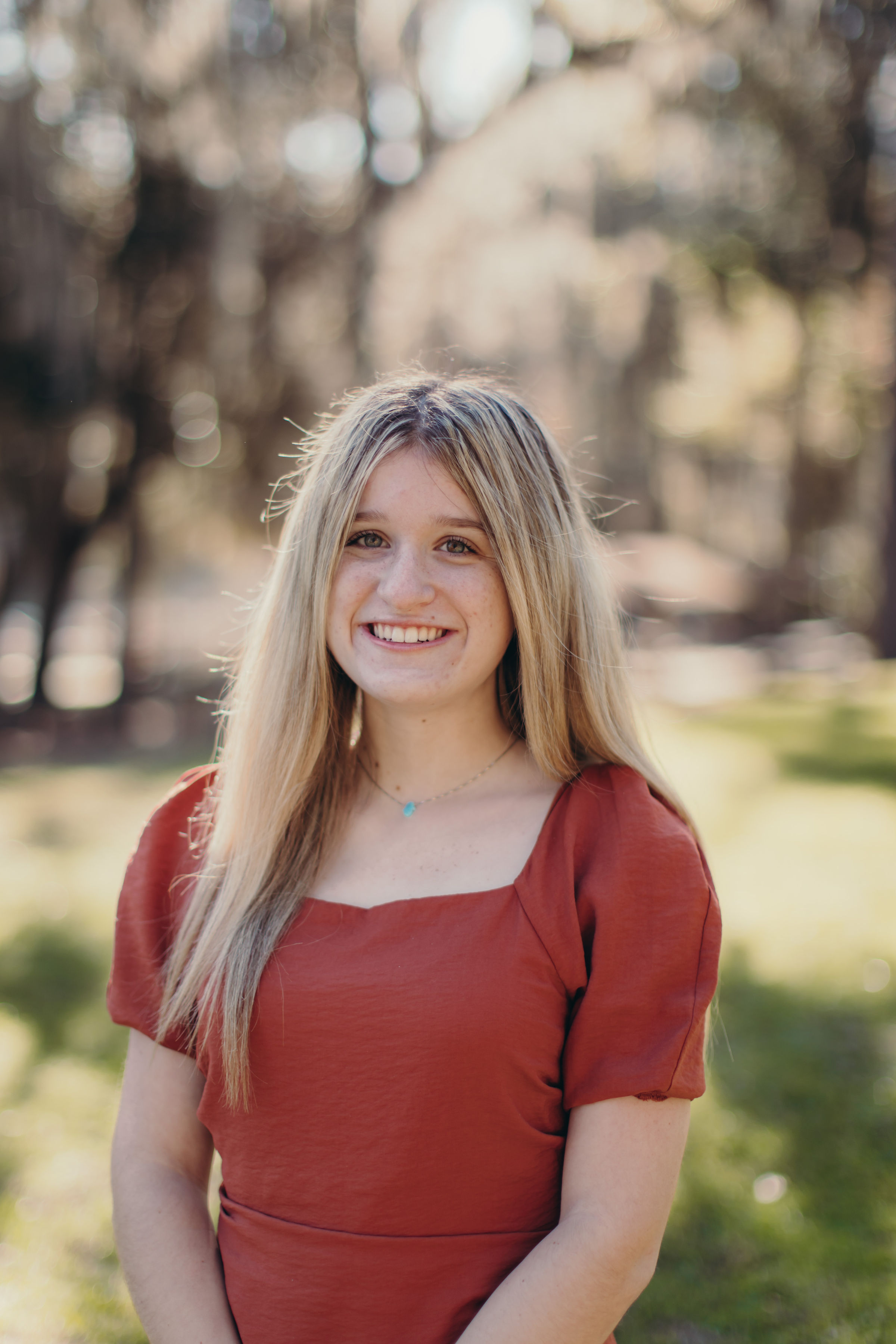
BIO
Rachel Peters is a second-year Florida State student from West Palm Beach, Florida pursuing a degree in Psychology. As a UROP student, she assisted in coding parent-reported concerns for 16 different types of concerns and coding observation videos for 16 early signs of autism spectrum. Rachel hopes to continue getting involved in undergraduate research, and plans to obtain an education specialist degree through a school psychology program after graduation.
Examining Parent Concern after Autism Screening in Children under 24 Months
Authors: Rachel Peters, Jessica HookerStudent Major: Psychology
Mentor: Jessica Hooker
Mentor's Department: Autism Institute Mentor's College: Medicine Co-Presenters:
Abstract
Introduction: As the prevalence of children with Autism Spectrum Disorder (ASD) continues to rise, primary care providers play a key role in early identification and intervention. Yet, the USPSTF does not recommend screening without parent-reported concerns. It is important to examine the types of parent concerns reported, as well as the differences between the number and types of concerns across children with different diagnostic outcomes, to determine the potential effectiveness of this approach.. Methods: This study examined a sample of 599 children who were screened for autism or communication delay. Parents completed the Early Screening for Autism and Communication disorders (ESAC) and reported any concerns about their child’s development, which were coded for 16 types of concerns. Results: Most parents of children that were concerned about the expressive communication and development of their child. Most of the parents of children who were diagnosed with Autism did not report a specific concern of Autism or concerns about the diagnostic features and the time of screening. This study has important implications regarding the early identification of autism.
Keywords: autism screening, communication delay, caregiver responses, children
22nd annual Undergraduate Research Symposium
Diego Abad Sajamin Poster Session 5: 1:30-2:15/Poster #25
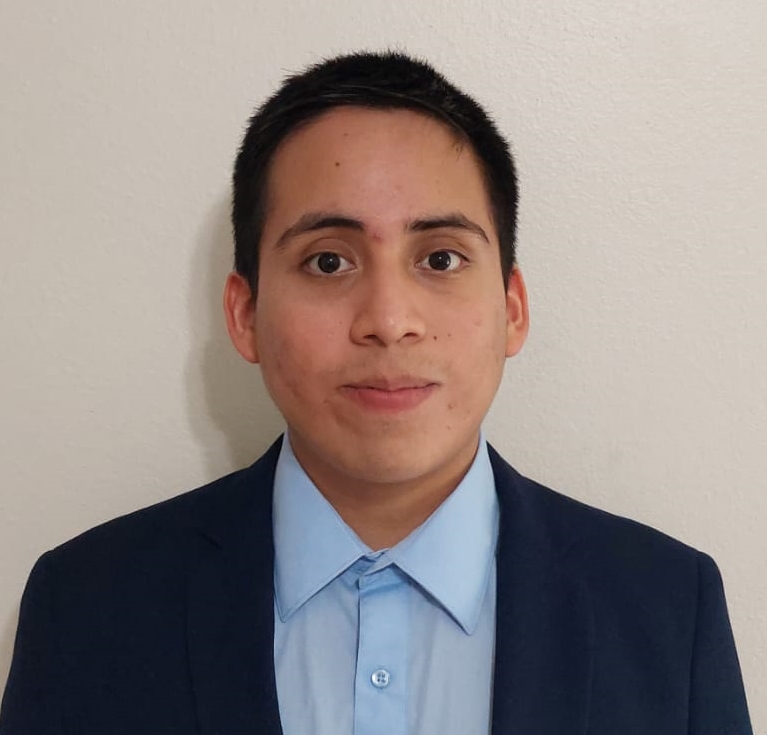
BIO
My name is Diego Abad, I'm 19 years old, and I'm a Computer Engineer at FSU. I transferred in Fall 2021, and I enjoy the environment at the College of Engineering. I like computers in general, programming, and robotics. I was part of my high school robotics team, and I'm always looking for new ways to implement my knowledge into fun projects.
Design of an All-terrain Unmanned Ground Vehicle
Authors: Diego Abad Sajamin, Christian HubickiStudent Major: Computer Engineering
Mentor: Christian Hubicki
Mentor's Department: Mechanical Engineering Mentor's College: FAMU-FSU College of Engineering Co-Presenters:
Abstract
Unmanned Ground Vehicles (UGV’s) are invaluable for public safety tasks such as Explosive Ordnance Disposal (EOD). In collaboration with L3Harris Technologies, we are exploring alternative designs to the traditional “treaded” robot design in favor of designs more capable of reliable stair-climbing. We designed and built a motorized Lego device for testing to evaluate a promising alternative “articulated” design combining wheels and legs since if it is possible to create it using Lego pieces, it should be possible to build it with more complex equipment. The current model can be moved using a game controller, and it can both spin its wheels and rotate its legs about an offset axis. Currently, the current prototype is capable of climbing 17-cm tall obstacles. The future for this project will aim to create a robot that can easily climb stairs while being sturdy enough to allow other tasks like bomb defusing. Ongoing work will systematically test control strategies for climbing over obstacles and upstairs, automatic movement, and other additional features.
Keywords: Technology Engineering Robots
22nd annual Undergraduate Research Symposium
Francesca Settineri Poster Session 1: 9:00-9:45/Poster #13

BIO
I was born and raised in Miami Beach, Florida to a Cuban mother and Italian father. I am fluent in English, Spanish, and Italian. I am currently an undergraduate student in the College of Social Sciences and Public Policy. My major is Public Health and my minor is Women's Studies. My current career goal is to attend medical school and become a physician. As of now, my preferred specialty would be pediatrics as I love working with kids and find the specialty to be very interesting. During my time at Florida State, I have chosen to get involved in Dance Marathon and served the organization as a Family Relations Captain this past year. In addition, I am interested in women's health, social justice, and politics.
Long-Acting Reversible Contraceptives Health Literacy Study
Authors: Francesca Settineri, Dr. Helen MahonyStudent Major: Public Health
Mentor: Dr. Helen Mahony
Mentor's Department: Public Health Mentor's College: College of Social Sciences and Public Policy Co-Presenters:
Abstract
Background: Of all developed countries, the U.S. has the highest rate of unintended pregnancies. This study aims to identify gaps in health literacy within the medical field regarding Long-Acting Reversible Contraceptives.
Methods: Participants for this project were chosen randomly from a pool of OB/Gyn, Pediatrics, and Family Medicine residency programs and contacted through email to complete an e-survey based on the health literacy framework. The data was analyzed using SPSS; frequencies regarding participant demographics and availability of LARCs in their medical practice were found.
Results: Among participants (n=13) in the Family Medicine specialty, 53.8% were female. When asked about the availability of the contraceptive implant and intrauterine device at their practice, 84.6% said both were available. Among participants (n=23) in the Pediatric specialty, respondents were majority female (82.6%) and white (78.2%). 91.3% of respondents said that the implant is available at their practice while 87.0% said that the IUD was available. In the OB/Gyn specialty, the majority of respondents (n=17) identified as white (94.1%) females (82.4%); of all respondents, 35.3% said their program was religiously affiliated. All (100%) respondents said that the IUD is available where they practice and 94.1% said the implant was available.
Conclusions: Data analysis is ongoing; based on preliminary findings, LARC availability differs for each residency program. Future data analysis will assess predictors of shared decision-making, LARC counseling and insertion practices, and associations between health literacy domains and participants.
Keywords: women's health, public health, LARC
22nd annual Undergraduate Research Symposium
Donald Spurlock Poster Session 1: 9:00-9:45/Poster #50
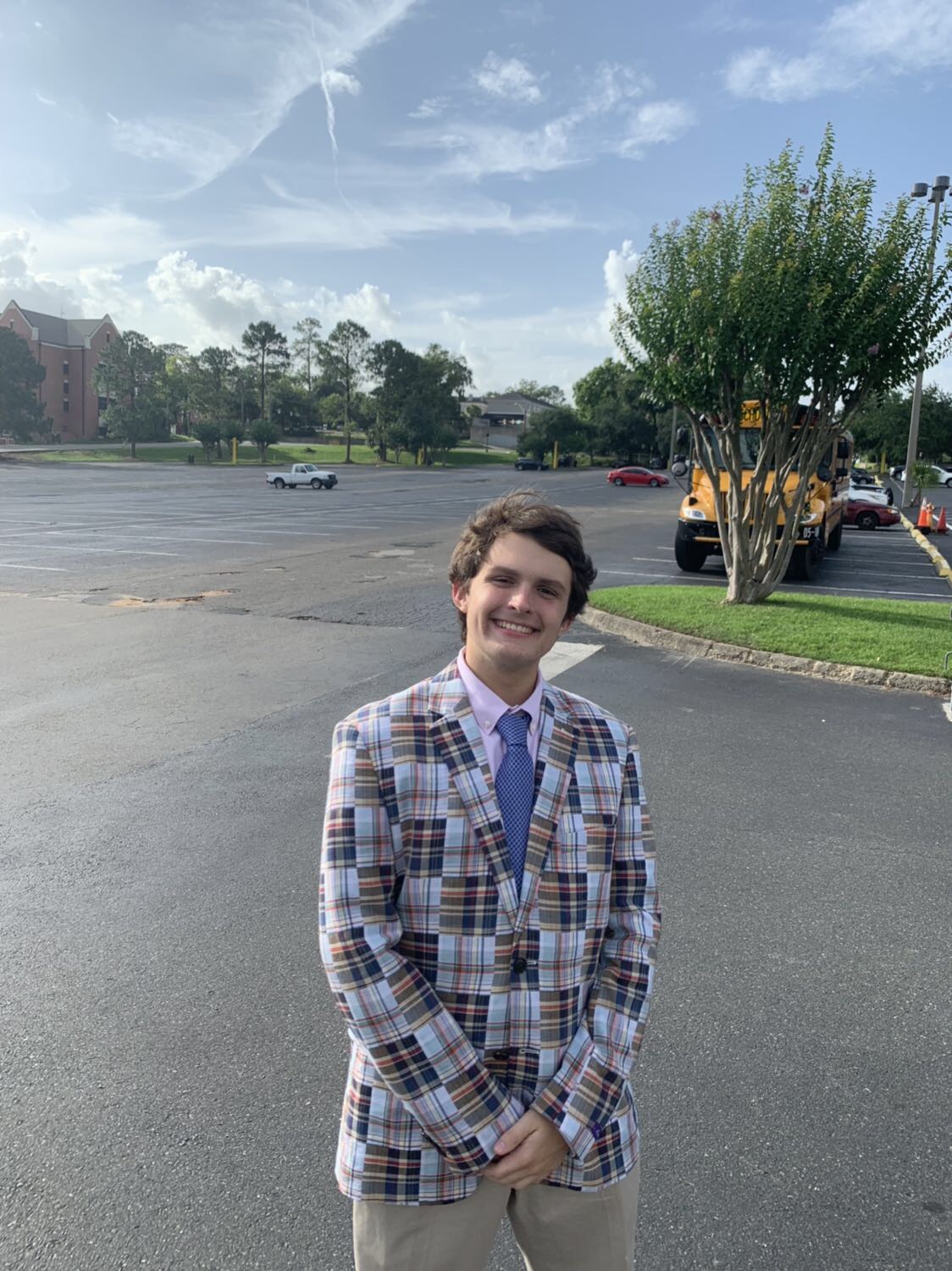
BIO
I am a sophomore from St. Petersburg Florida. I have always been interested in clinical psychology, however, research was not on my radar until I entered the UROP program. Due to this opportunity, I have found that I really enjoy research and I would like to further my understanding of the field. The kind of research I would like to do next is to work with a lab that focuses on both clinical psychology and neuroscience.
THE ASSOCIATION BETWEEN SPECIFIC ASPECTS OF SOCIAL MEDIA USE AND DEPRESSIVE SYMPTOMS IN COLLEGE STUDENTS.
Authors: Donald Spurlock, Madeline WickStudent Major: Behavioral Neuroscience
Mentor: Madeline Wick
Mentor's Department: Psychology Mentor's College: FSU Co-Presenters:
Abstract
Social media is an important aspect of most college students’ lives. Previous research has indicated that social media use may be a correlate and cause of depressive symptoms; however, little is known about what specific aspects of social media use drives this relationship. The present study utilized data previously reported in Wick and Keel (2020) to determine how various aspects of social media use relate to depressive symptoms in college students. Participants included N=80 college students (93% female) who completed self-report surveys that measured depressive symptoms using the Center for Epidemiological Studies Depression Scale (CES-D; Radloff, 1977) and patterns of social media use, with a focus on Instagram. Results indicated that having a public Instagram account, caring about comments on one’s social media photos, taking photos for the sole purpose of posting them on social media, frequently deleting photos on social media, and experiencing discomfort posting unedited photos of oneself on social media were positively correlated with depressive symptoms in college students. Correlation effect sizes ranged from small to medium (r = .26 to .32). Results highlight aspects of social media use that may be problematic due to their association with increased depressive symptoms. Future research should examine the direction of these associations through extension to longitudinal and experimental designs.
Keywords: Social Media & Depression
22nd annual Undergraduate Research Symposium
Ashleigh Kairalla Poster Session 6: 2:30 - 3:15/Poster #18

BIO
Ashleigh Kairalla is in her second year at Florida State University. She is majoring in Political Science and is minoring in International Affairs. After she graduates, she plans on going into law school. When she is not busy working, she can usually be found with her dog and a good book. Ashleigh deeply enjoys the work that she is doing with UROP and hopes to continue with research in the future.
Into the Media's Framing of Climate Change
Authors: Ashleigh Kairalla, Kenneth MackieStudent Major: Political Science
Mentor: Kenneth Mackie
Mentor's Department: Department of Political Science Mentor's College: College of Social Sciences and Public Policy Co-Presenters: Lauren Kathleen Fernandez
Abstract
This research attempts to convey an understanding of how the media has changed in its coverage of climate change in the past 15 years. Utilizing transcripts from cable news networks, this work analyzes the tonality, coverage, and focus of different news networks concerning climate change over time. In particular, it analyzes the differences in language used by partisan news networks concerning this topic. This research finds that, over time, news networks have begun to be more accepting of the concept of climate change and, oftentimes, partisan news networks – both left and right-leaning – attempt to use this crystalized issue in order to appeal to their supporters – although their language is considerably different. This research project is currently still ongoing.
Keywords: Climate change, political science, news
22nd annual Undergraduate Research Symposium
Jennifer Lafortune Poster Session 6: 2:30 - 3:15/Poster #54

BIO
Hi! My name is Jennifer Lafortune. I'm a first-generation Haitian-American, second-year Florida State student from Miami, Florida majoring in Public Health and minoring in Chemistry. My career goal is to become a pediatric cardiologist while conducting research in the public health sector, more specifically in Maternal and Fetal Medicine.
Exploring Science Teachers’ Perceptions About Co-Design Process Focused on Classroom Assessment Tasks
Authors: Jennifer Lafortune, Dr. Miray Tekkumru-KisaStudent Major: Public Health
Mentor: Dr. Miray Tekkumru-Kisa
Mentor's Department: School of Teacher Education Mentor's College: College of Education Co-Presenters: Sarah Ghali, Samuel Domsch, and Elena Malchevskaya
Abstract
The Next Generation Science Standards (NGSS) is a set of education standards used across disciplines and grades in the United States to provide students with an internationally benchmarked science education rich in content and practice. The primary purpose of NGSS is to create a common standard for teaching in the U.S. and help in fostering a greater interest in science among students. Classroom-based performance assessments are embedded into classroom instructions to provide teachers with insight into how their students understand the material taught in class and monitor the development of their thinking skills. Three-dimension (3-D) assessments allow teachers to evaluate and monitor students’ progress during the course and use the evidence to offer targeted support catered to the student’s needs. While numerous states and school districts seek to find class-based performance assessments that support their goals for effective science instruction and NGSS guidelines, few quality assessments exist. This research introduces an accessible and receptive co-design process that focuses on five critical points that advantage their expertise. Seven 8th grade science teachers from an urban district participated in ten co-design meetings over six months. In this study, the teachers’ experiences regarding the co-design meetings and the way they perceived the co-design meetings were examined through the usage of interview protocol questions used to elicit teachers to think about their experiences during the meetings.
Keywords: teacher education, classroom assessments, co-design process
22nd annual Undergraduate Research Symposium
sophia Pfitzenmaier Poster Session 6: 2:30 - 3:15/Poster #36

BIO
My name is Sophia Pfitzenmaier, I am a native of Florida from Pembroke pines. Currently this year I am a sophomore Dance major here at Florida State University. The research project I have been working on is about the minority representation of women and different ethnicities show on and off the dance and theatre stages. I am a huge supporter for arts advocacy, especially gender roles inside dance and theatre communities. Women are normally the dancers whereas the males are normally the ones that call the shots "behind the table" as the choreographer, producer, and director. women are just as capable of creating great work, they do but often go uncredited. This is one of the many reasons I plan to one day make a career advocating for gender equity and access the arts.
Behind the table
Authors: sophia Pfitzenmaier, Calypso HaddadStudent Major: dance
Mentor: Calypso Haddad
Mentor's Department: dance Mentor's College: college of fine arts Co-Presenters: Jasmine Burelsmith
Abstract
Musical theatre, specifically broadway dance, has emerged from a problematic past. Thus, this research questions what broadway dance is and how collaborators receive credit for their contributions. These concepts are explored creatively through a choreographic work that brings to light the frustrations of those in front of the table. Historically, white males have been the lead creatives, driving a theatrical production from behind the table. Therefore, this work illuminates the intricate relationships of those not in positions of power and infers the emotional and physical strain endured by dancers. Beyond that, choreography is often collaborative during the early creative process where Each individual would and should normally receive credit for their contribution throughout the process. This work brings forward what is incorrect with the ladder of theatre workshops. Within the production team and dancers acknowledgement is crucial and necessary in order to further succeed in the industry. This concept rings true at every level of production hierarchy.
Keywords: Dance, Musical theatre, minority representation
22nd annual Undergraduate Research Symposium
Mattan Pelah Poster Session 4: 12:30 - 1:15/Poster #54

BIO
My name is Mattan Pelah and I was born in Cambridge, England, and lived there until moving to South Florida at the age of 10. I studied at Florida Atlantic University High School, where I took, exclusively, university classes starting in my sophomore year of high school. I was always interested in the brain and began as a neuroscience major. However, after discovering the emergence of artificial intelligence in today's technological world, as well as the ever-increasing reliance on computational methods in science, I switched to studying computer science. I plan to further study the brain in graduate school and look forward to a career associated with investigating cognition, neural computation, and neurodegeneration. I am grateful to my UROP mentor, Dr. Hurdal, for working with me on this brain research project, and I look forward to presenting our findings at this symposium!
Mathematical and computational methods for comparing anatomical structures in MRI brain scans of Alzheimer's Disease and healthy controls
Authors: Mattan Pelah, Monica K. HurdalStudent Major: Computer Science
Mentor: Monica K. Hurdal
Mentor's Department: Department of Mathematics Mentor's College: College of Arts and Sciences Co-Presenters:
Abstract
According to the Centers for Disease Control (CDC), as many as 5.8 million Americans are afflicted with Alzheimer’s Disease (AD), a condition that results in significant and progressive cognitive impairments. While research on AD progresses steadily, the total number of cases is projected to nearly triple to 14 million by the year 2060 [1]. This project applies a mathematical method derived from planar geometry, called ‘circle packing.’ Anatomical structures from the human brain are extracted from Magnetic Resonance Imaging (MRI) data from AD patients and compared with healthy controls. Conformal (angle preserving) maps are then created using mathematical techniques. The resulting conformal maps can be used to define a coordinate system from which the features representing anatomical landmarks can be described and used to identify significant disparities between the two sample groups. Using this innovative method of studying brain anatomy, we hope to make significant new discoveries about characteristic anatomical features affected by AD. The methods being developed may potentially be applied to analyses of brains affected by other common neurodegenerative diseases, such as Parkinson’s disease, and in various brain regions (e.g., [2]).
[1] Alzheimer’s Disease and Healthy Aging: Alzheimer's Disease and Related Dementias. Centers for Disease Control (CDC). https://www.cdc.gov/aging/aginginfo/alzheimers.htm#:~:text=In%202020%2C%20as%20many%20as,were%20living%20with%20Alzheimer's%20disease.&text=Younger%20people%20may%20get%20Alzheimer's,14%20million%20people%20by%202060. Accessed on 2/22/2022.
[2] Hurdal, M.K., Bowers, P.L., Stephenson, K., Sumners, D.W., Rehm, K., Schaper, K., & Rottenberg, D.A. (1999). Quasi-Conformally Flat Mapping the Human Cerebellum. MICCAI.
Keywords: MRI, Alzheimer's Disease, Brain Mapping, Circle Packing, FreeSurfer
22nd annual Undergraduate Research Symposium
Jack Nichols Poster Session 5: 1:30 - 2:15/Poster #10
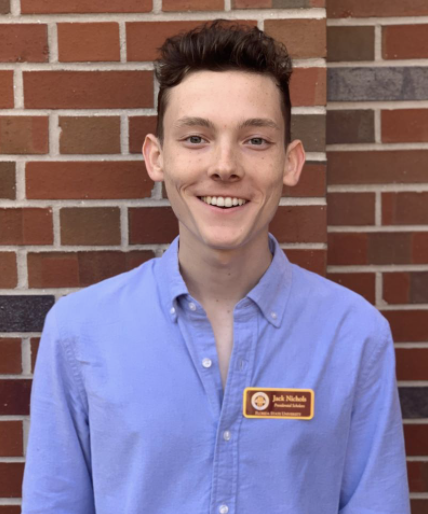
BIO
My name is Jack Nichols, and I am a first-year student at Florida State University studying Spanish and Pure mathematics. I was born and raised in Star, Idaho (a rural suburb in the Boise area). At the moment, I plan on pursuing a career in teaching or education policy, and my research interests include intersectionality, multicultural teaching, and international education.
Gender Bias in Academic Letters of Recommendation
Authors: Jack Nichols, Jennifer AdamsStudent Major: Spanish and Pure Mathematics
Mentor: Jennifer Adams
Mentor's Department: Creative Writing Department Mentor's College: College of English Co-Presenters: Ana Gitli and Maria Aleman
Abstract
This investigation evaluated the systematic effects of gender bias on the quality and integrity of letters of recommendation (LORs) from various academic disciplines. To do so, we analyzed the qualitative content of 54 LORs and calculated the relative frequencies of certain adjectives, descriptive phrases, and personal qualities in each letter. We then compared the frequency values to one another and identified any statistical disparities between male and female LORs. Our preliminary findings reflect the ongoing presence of gender bias in academia, as male applicants were more likely to be described as “reliable” when compared to their female counterparts. Similarly, a greater portion of letters written on behalf of male applicants contained “superlative” descriptions and references. Nevertheless, an unexpected proportion of male applicants were described using traditionally “feminine” language and terminology. These findings indicate that certain words have started to lose their gendered connotations in recent years. Ultimately, these results can be used to create educational resources that guide professors and faculty members through the process of writing unbiased LORs.
Keywords: Gender Bias, Letters of Recommendation, Higher Education
22nd annual Undergraduate Research Symposium
Giuliana Klioze Poster Session 3: 11:00- 11:45/Poster #50

BIO
Hello, I am a second-year neuroscience major with a passion for science. I grew up in Daytona Beach and attended Seabreeze high school. Throughout high school and continuing in college I have been infatuated with the human body and how it functions. I have always dreamed of becoming a physician and recently grown an interest in neurology due to the many mysteries of the brain. I want to understand the functioning of our brain and figure out what and why some of the circuit-like processes are disrupted. My future goal is to become a neurologist.
Investigating the Role of a Schizophrenia Risk Gene in Protein Degradation
Authors: Giuliana Klioze, Jiajing ZhangStudent Major: Cell and Molecular Neuroscience
Mentor: Jiajing Zhang
Mentor's Department: Biomedical sciences Mentor's College: College of Medicine Co-Presenters: James Cohan
Abstract
The 14-3-3 protein family is genetically linked to schizophrenia, and studies found that mouse models with 14-3-3 deficiencies exhibit schizophrenia-like behaviors and anatomical abnormalities, including a reduction in dendritic spine density in the brain. Dendritic spines are small protrusions that comprise the postsynaptic compartment of excitatory synapses in the central nervous system. Numerous signaling pathways regulate the actin cytoskeleton of dendritic spines to mediate their proper formation and maintenance. Previous studies identified δ-catenin, an adhesive junction-associated protein crucial in the modulation of actin dynamics, as a potential binding target of 14-3-3. Due to this correlation, 14-3-3 proteins have been studied for their interactions with δ-catenin, although there is conflicting data on how they affect one another. We set out to determine the exact relationship between 14-3-3 and δ-catenin by expressing δ-catenin in a heterologous system for 24 hours and examining remaining δ-catenin levels at several time intervals after overexpression or inhibition of 14-3-3 proteins in vitro. Our preliminary results suggest that 14-3-3 overexpression stabilizes δ-catenin, while the effect of 14-3-3 inhibition remains to be determined. This indicates that 14-3-3 proteins may play a role in the formation of dendritic spines by supporting δ-catenin stabilization in an undetermined pathway.
Keywords: Schizophrenia, protein degradation, 14-3-3 protein, delta-catenin
22nd annual Undergraduate Research Symposium
Sergio Belalcazar Poster Session 2: 10:00-10:45/Poster #64

BIO
I am an FSU student who is on the Pre-Physician's Assistant track, and my research interests are in limiting social injustices that affect underprivileged communities along with diseases that affect said communities.
Investigating the Relationship Between Working Fast and the Risk of Injury in Latin American Construction Workers
Authors: Sergio Belalcazar, Dr. Joseph GrzywaczStudent Major: Public Health
Mentor: Dr. Joseph Grzywacz
Mentor's Department: Human Development & Family Science Mentor's College: College of Health and Human Sciences Co-Presenters:
Abstract
Purpose/Background:
Small-scale Latin American residential construction workers have among the highest rates of injury/ fatality. Looking at transcripts of conversations with construction workers, and contractors we find that some causes behind these injuries is because of working fast. The study aims to look at why small-scale Latin American residential construction workers work fast and how they are attributed to increased injury and fatality.
Methods:
In the Ponte Listo project, qualitative semi-structured interviews were undertaken with n=5 Latino contractors and n=4 Latino construction workers. Interviews were recorded and transcribed. Interviews were coded independently with a set of UROP students as primary and secondary coders which were then discussed to find discrepancies.
Results:
Both contractors and workers had similar explanations as to why construction workers worked “fast”. Many alluded to other outside “pressure” such as having to work “fast” in order to make more money to take care of their families and “send money back home”.
Discussion:
Small-scale residential construction companies usually have contractors that hire workers and the amount of money that they receive is based on how much they get done during the day. Unlike large companies that pay their employee by the hour. Since small-scale residential construction workers are paid by the amount of square footage completed. They have little incentive to take time to put on safety equipment or spend time going to seminars, which takes away the time from finishing a job
Keywords: Latino, construction, fatality, fast
22nd annual Undergraduate Research Symposium
Sophie Winer Poster Session 2: 10:00-10:45/Poster #68
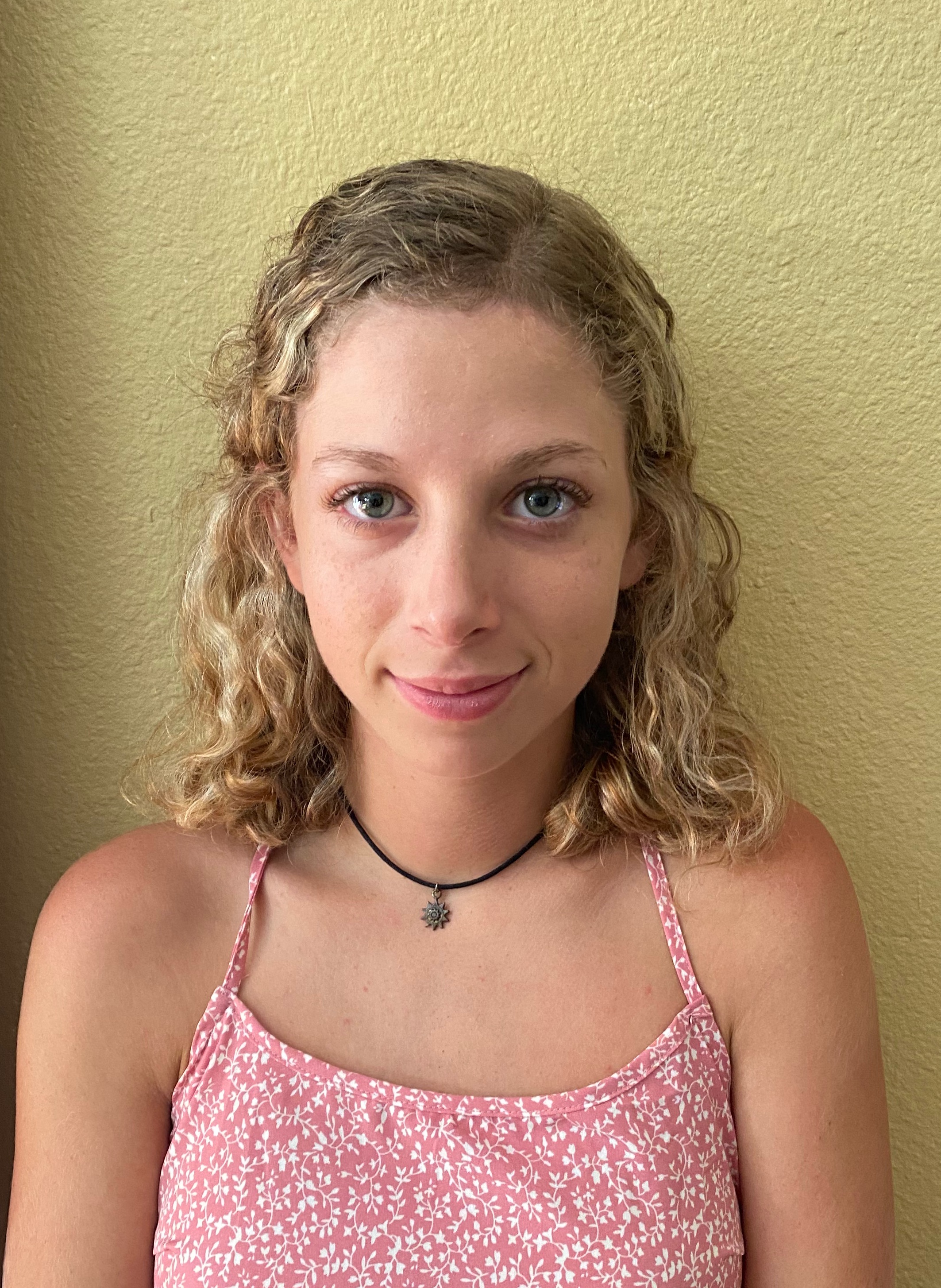
BIO
I am a freshman in the Presidential Scholars program. My research interests include sociology and history.
Evolving Christian Womanhood and Social Change in Mt. Meru, Tanzania
Authors: Sophie Winer, Dr. Beth Ann WilliamsStudent Major: International Affairs
Mentor: Dr. Beth Ann Williams
Mentor's Department: Department of Religion Mentor's College: Florida State University Co-Presenters:
Abstract
Our study focuses on the role of the church as a source of community and empowerment for women in Mt. Meru, Tanzania amidst patriarchal societal norms. We seek to look at the evolution of husband-wife relations over previous decades and the importance of involvement in the church as an outlet for women. Our research utilizes qualitative methods through the analysis of interviews conducted in Mt. Meru by Dr. Beth Ann Williams in 2016 and 2017. I integrate external research to provide insight on colonial involvement and analyze the impact of European economic, gendered, and religious influence on Mt. Meru.
Colonial influence degraded traditional religious and economic systems within Tanzania, cultivating a unique cultural climate that the interview subjects provide intersectional insight on. Women’s poor employment leads to confinement in the home and increased dependence on men, making socialization in church and personal relationships with God crucial to female social and emotional freedom. The church provides loans and educational seminars for women, alleviating some imbalance as women navigate general male dominance in social and financial sectors. However, most women described their struggle to balance more responsibilities outside of the home with enduring family duties. This births a conflict between advances of women provided through the church alongside persisting patriarchal social norms. Our research thus explores the prevalence of the church in the community as a place of support and social impact.
Keywords: sociology, religion, history, gender
22nd annual Undergraduate Research Symposium
Lily Childers Poster Session 6: 2:30 - 3:15/Poster #26
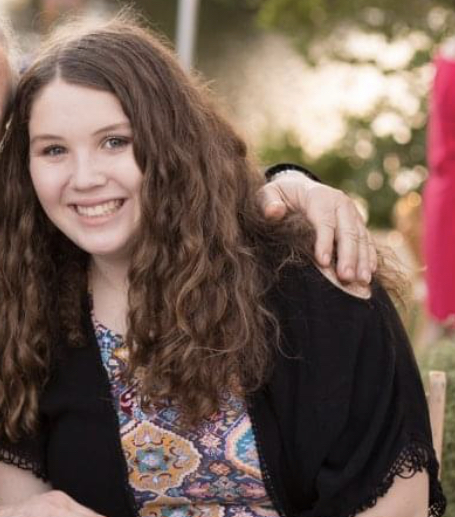
BIO
My name is Lily Childers and I am from Orlando, Florida. I am a second-year student majoring in history on the pre-medical track. I am interested in a career in medicine that involves equal parts research, teaching, and clinical care. I am appreciative that the Undergraduate Research program has allowed me to couple my interest in STEM and the humanities in order to improve the lives of others. My time in the Undergraduate Research program has amplified my desire to pursue academic medicine in order to serve others.
Nutrient Intake Associations with Lipid Profiles, Renal Function, and BMI in Overweight and Obese Subjects with Type 2 Diabetes Mellitus
Authors: Lily Childers, Neda AkhavenStudent Major: History
Mentor: Neda Akhaven
Mentor's Department: Department of Nutrition and Integrated Physiology Mentor's College: College of Health and Human Sciences Co-Presenters: Andres Gancedo and Sophia Saadati
Abstract
The incidence of type 2 diabetes mellitus (T2D) continues to increase in the United States (U.S.), and is a major contributor of morbidity and mortality due to its increased associated risk of cardiovascular disease. Additionally, treatment of T2D and associated complications creates a large economic burden. Disturbances in lipid metabolism and renal function contributing to diabetic dyslipidemia and kidney disease can occur years prior to the development T2D and contributes to further adverse outcomes observed within this population. Diet plays an important role in the prevention and treatment of T2D, with particular emphasis placed on diet quality (e.g. rich in fiber, low in saturated fat) and overall intake (meeting essential macro- and micronutrients). Therefore, the objective of this study was to examine the relationship between dietary intake on lipid profiles, kidney function, and anthropometrics in overweight and obese men and women with T2D. Twenty overweight and obese (BMI 25-40 kg/m²) men and postmenopausal women between the ages of 45-80 years participated in this study. Three-day food records were used to assess dietary intake (Food Processor Software; ESHA Research, Salem, OR); the Piccolo Xpress Clinical Chemistry Analyzer was used to assess lipid profiles (LDL, HDL, CHOL, VLDL, TRIG) and renal function (ALB, BUN, Na+, Cl- Ca, CRE, GLU, PHOS); and anthropometrics were assessed from participants’ height, weight, waist, and hip circumferences. Pearson correlation coefficient was used for overall associations of all outcome variables, with significance accepted at (P≤0.05).
Keywords: Diabetes, Type 2, Nutrition, Cardiovascular, Carbohydrates
22nd annual Undergraduate Research Symposium
David Garner Poster Session 5: 1:30 - 2:15/Poster #38
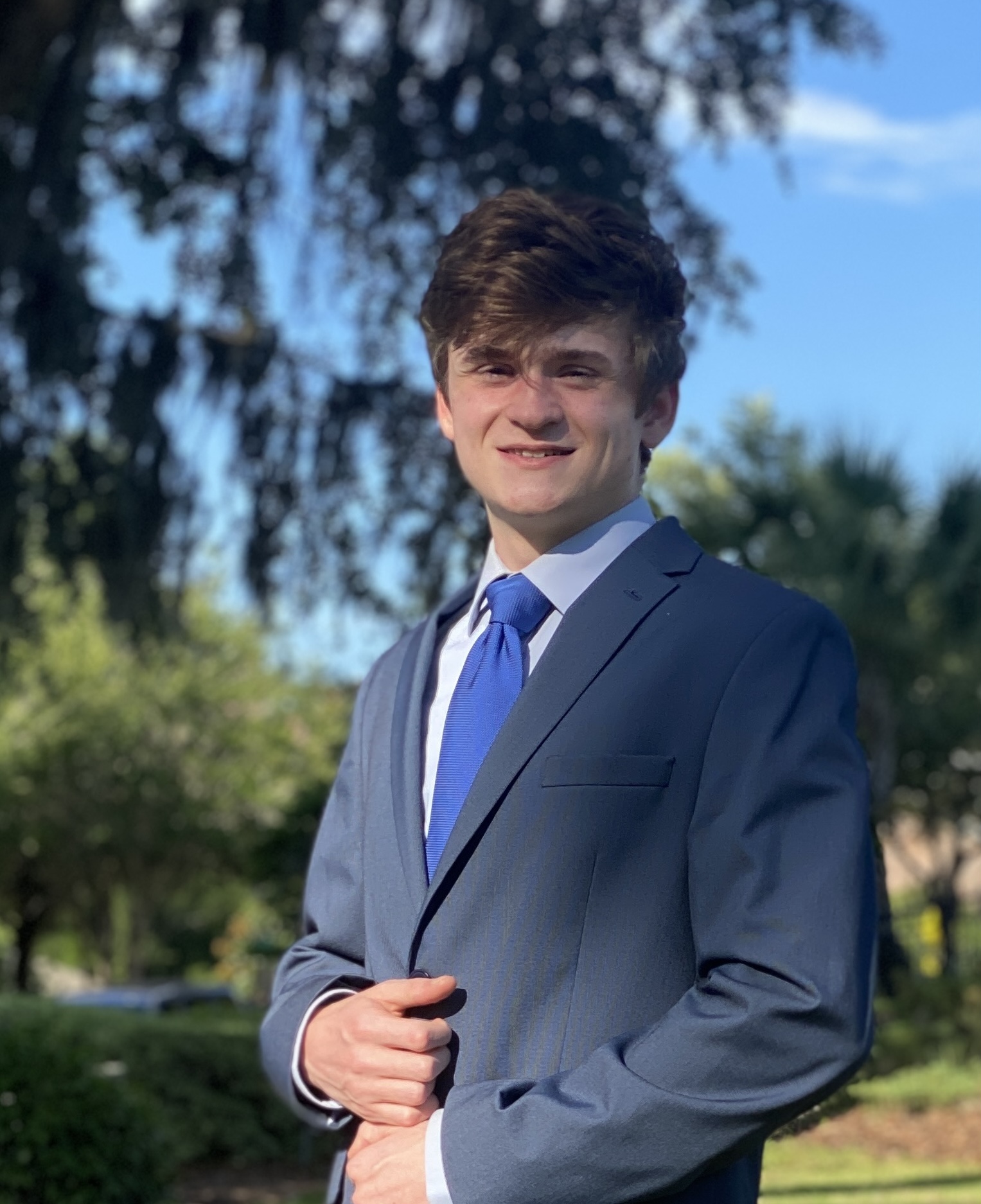
BIO
I am from Gainesville, FL. I am freshman in the FSU Honors program and I plan to study law. I enjoy working out and hanging out with friends.
Towards an AI-based Application to Support Lab Results Comprehension
Authors: David Garner, Zhe HeStudent Major: Political Science
Mentor: Zhe He
Mentor's Department: Department of Computer Science Mentor's College: College of Communication and Information Co-Presenters: Madelyn Dupuis and Shawntah Thomas
Abstract
Before starting this research project, a lot of research was conducted to determine the necessity of a uniform, simplistic e-health patient portal for patients suffering from acute and chronic diseases. Through research we have learned technology has been rapidly evolving in the 21st century, however, the ever increasing elderly population is falling farther and farther behind. This is a problem as health data is transitioning over to Electronic Health Record Systems. Through further research, we have discovered numerous additional variables that are affecting elderly patients and patients, in general, from obtaining and understanding their lab results. There are two main variables. First, hospitals across the US fluctuate in determining lab result interpretation. This can be due to multiple reasons but generally is due to a lack of uniform consistency amongst doctors and nurses, and this results in a variety of different conclusions of lab results and creates confusion amongst patients. Second, the majority of patients are not familiar with medical terms and explanations. This term is coined as health literacy. The effect of patients having low health literacy is a greater chance for patient misinterpretation of lab results and a lack of patient engagement in treatments. Both result in very serious negative health impacts. Through further research, we have identified that A.I. based-patient portals are an effective solution to bridging the gap between patients across the US receiving inconsistent treatments and having low health literacy. However, current patient portals need improvement and that’s where our project comes into play.
Keywords: Application for Lab Results Comprehension
22nd annual Undergraduate Research Symposium
Matthew Stephens Poster Session 3: 11:00-11:45/Poster #9

BIO
My name is Matthew Stephens and I am going to be a 2024 graduate at FSU. I am from Milton, Florida. I am majoring in Dietetics and hoping to eventually achieve my MS degree in Sports Nutrition.
The Composite that is Recoverable
Authors: Matthew Stephens, Dr. Mei ZhangStudent Major: Dietetics
Mentor: Dr. Mei Zhang
Mentor's Department: Engineering Mentor's College: FAMU-FSU College of Engineering Co-Presenters:
Abstract
The demand for lightweight and strong materials continues to rise especially for weight critical applications such as aerospace and automotive. Along with this demand the desirability for materials to be recoverable after deformation is also increasing. In this work, we fabricated a special lightweight nanocomposite, which is made by infiltrating a thermoplastic polymer into the nanocarbon foam. The nanocarbon foam is made up of carbon nanotubes (CNTs) and nano-scaled graphitic carbon and has biporous and open-cell structure. After infiltration, the polymer is coated onto the surface of the CNTs and reinforce the structure effectively. The compressive strength is increased while the electrical property is kept intact. The nanocomposites are not elastic. When compressed, the permanent deformation occurs due to the plastic deformation undergone by the polymer. It’s found that the permanent deformation can be recovered by simply using heat via direct heating, IR light, and application of electrical voltage. Heating the deformed nanocomposite to the temperature around the glass transition temperature (Tg) range of polymer, results in the full strain recovery of the nanocomposite. It is because that the polymer assumes a soft and rubbery behavior beyond Tg, while the intrinsically elastic CNTs, which are still surrounded by polymer, are able to rebound and exhibit their elasticity by overcoming the force applied by the enclosing polymer upon the reduction in its Young’s modulus. The nanocomposite becomes rigid again when its temperature is lower than Tg. It is remarkable that the recovery in both structure and property can be repeated.
Keywords: Composite, Recoverable, CNT
22nd annual Undergraduate Research Symposium
Amanda Nuñez Poster Session 1: 9:00 - 9:45/Poster #52
BIO
My name is Amanda Nunez. I am from West Palm Beach, Florida, and I’m a second-year undergraduate student majoring in Interdisciplinary Medical Sciences with a focus in Clinical Professions. I have aspirations of attending medical school and as of now am highly interested in the specialty of pediatrics. My research interests comprise medical research, more specifically having to do with children, where the research I am taking part in now involves the screening of infants and toddlers for autism. I have been heavily involved in many extracurriculars relating to my major and career goals throughout the last two years and intend to continue with these pursuits.
Examining Parent Concern after Autism Screening in Children under 24 Months
Authors: Amanda Nuñez, Dr. Jessica HookerStudent Major: Interdisciplinary Medical Sciences
Mentor: Dr. Jessica Hooker
Mentor's Department: Autism Institute Mentor's College: College of Medicine Co-Presenters: Rachel Peters, Megan Michaels, Danielle Stitzel
Abstract
Introduction: As the prevalence of children with Autism Spectrum Disorder (ASD) continues to rise, primary care providers play a key role in early identification and intervention. Yet, the USPSTF does not recommend screening without parent-reported concerns. It is important to examine the types of parent concerns reported, as well as the differences between the number and types of concerns across children with different diagnostic outcomes, to determine the potential effectiveness of this approach. Methods: This study examined a sample of 549 children who were screened for autism or communication delay between 12 and 26 months of age. Parents completed the Early Screening for Autism and Communication disorders (ESAC) and reported any concerns about their child’s development, which were coded for 16 types of concerns. Results: Most parents of children that were concerned about the expressive communication and development of their child. Most of the parents of children who were diagnosed with autism did not report a specific concern of Autism or concerns about the diagnostic features and the time of screening. This study has important implications regarding the early identification of autism.
Keywords: autism, children, screening
22nd annual Undergraduate Research Symposium
Kayla McLoone Poster Session 7: 3:30-4:15/Poster #57

BIO
I am a second year undergraduate student from Tampa, Florida. My prospective concentration for my International Affairs degree is Public Administration alongside a Certificate in Emergency Management and Homeland Security. I also just added Middle Easter Studies as my second degree while learning Arabic here at FSU, and I am always happy to learn about a new culture. My research areas of interest include– but are not limited to– cultural studies, social issues, social justice, identity, and gender studies. While I’m still unsure of my desired career path, I hope to have a career focused on humanitarian work.
Christianity and Social Change: A Gendered Lens of Empowerment, Responsibility, and Morality in Meru, Tanzania
Authors: Kayla McLoone, Dr. Beth Ann WilliamsStudent Major: International Affairs and Middle Eastern Studies
Mentor: Dr. Beth Ann Williams
Mentor's Department: Religion Mentor's College: Arts and Sciences Co-Presenters:
Abstract
The Lutheran church in Tanzania– established during the East African nation’s time under German colonial rule– has endured as a prominent institution in the Meru region. The church plays a significant role in defining East African womanhood and moral norms. This project looks at the role of the region’s Lutheran churches through the stories and lived experiences of Meru people in the second half of the twentieth century. Tanzanian women’s spirituality and involvement in the church informs their engagement with society and their understanding of empowerment. By maneuvering through Christian norms of morality and respectability, women are able to uplift themselves, their families, and their communities. Analyzing the interviews illuminated certain social issues, which were revealed in the interviewees’ ideas, opinions, and experiences. These themes include gendered expectations of child-rearing, disproportionate amount of work for women, and gender inequality in educational and economic opportunities. The experiences of women of varying ages and captured in these interviews also reveals differences in the prevalence of these social issues across generations. Through church programs, education, and their own faith, Tanzanian women have found the means and the determination to create socioeconomic opportunities for themselves and make change in their communities.
Keywords: Tanzania, Christianity, Women, Africa, Gender
22nd annual Undergraduate Research Symposium
Robert Laughlin Poster Session 7: 3:30-4:15/Poster #11
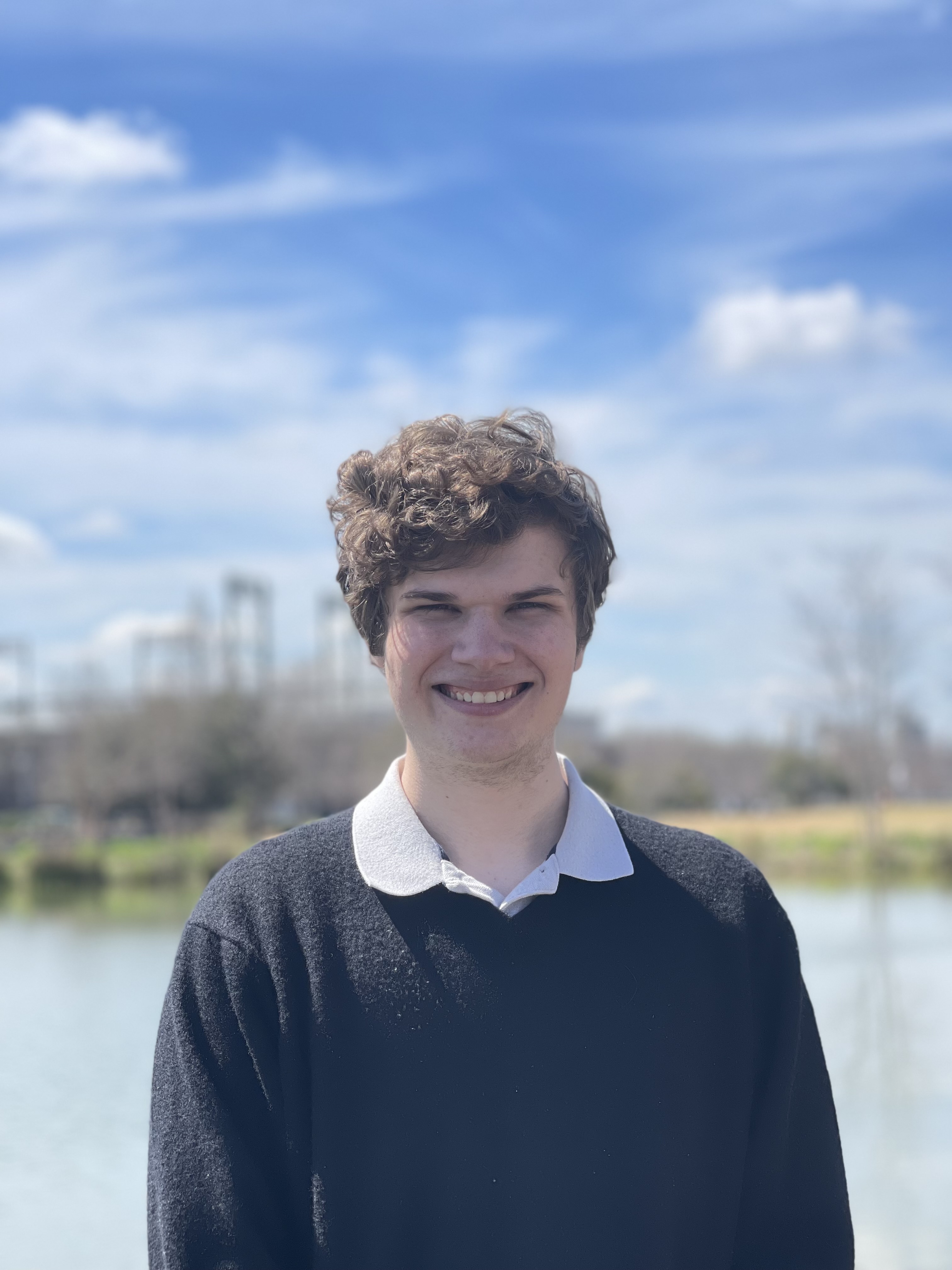
BIO
I am a sophomore from Birmingham, Alabama, majoring in Physics and Computational Science. I have always had a passion for learning and teaching. While in high school, I was a member of Vestavia Hills' nationally ranked math team and was a leader of the school’s Science Olympiad team. I am currently the historian for the Society of Physics Students at FSU and am being inducted into Phi Beta Kappa and Phi Kappa Phi later this spring. While an undergraduate, I hope to utilize my interests in science and mathematics to conduct research in high-energy physics. After completing my undergraduate degree, I have plans to pursue a graduate degree in physics, with the ultimate goal of becoming a physics professor.
Silicon Sensor Quality Control for the HGCAL Upgrade of the CMS Detector
Authors: Robert Laughlin, Dr. Rachel YohayStudent Major: Physics and Computational Science
Mentor: Dr. Rachel Yohay
Mentor's Department: Department of Physics Mentor's College: College of Arts and Sciences Co-Presenters:
Abstract
The High Luminosity Large Hadron Collider (HL-LHC) is an upgrade to the Large Hadron Collider (LHC), the most powerful particle accelerator in the world. The silicon sensors in the High Granularity Calorimeter of the HL-LHC will be able to detect the energy deposited by charged particles moving through them. The electrical characteristics of the latest prototype sensors need to be tested before production. Around half of the previously passing sensors fail the sensor requirements after these sensors were removed from their dicing frame. All the failing sensors fail on a single requirement: I(800) < 2.5x I(600), meaning that the total current at a reversed bias voltage of 800 volts is less than 2.5 times the total current at 600 volts. Our research team theorized that the failure of these sensors is a result of charge build-up on the sensor during handling and testing. To investigate the cause of the failure our research team investigated the effect of the duration of tests by looping tests, the humidity of the environment during tests, and the presence of a de-ionizing blower during tests on the total current with increasing bias voltage. Our research observed that during looped tests the total current at specific voltages increases over successive tests and continues to fail the I(800) < 2.5x I(600) requirement. Our research also observed that when the humidity of the environment is decreased from 43.8% to around 8% the sensors pass the I(800) < 2.5x I(600) requirement. The deionizing tests negatively affect already poor sensors.
Keywords: Physics, High Energy Physics, Particle Physics, Particle Accelerator, Detectors
22nd annual Undergraduate Research Symposium
Endryval Camba Poster Session 6: 2:30-3:15/Poster #65
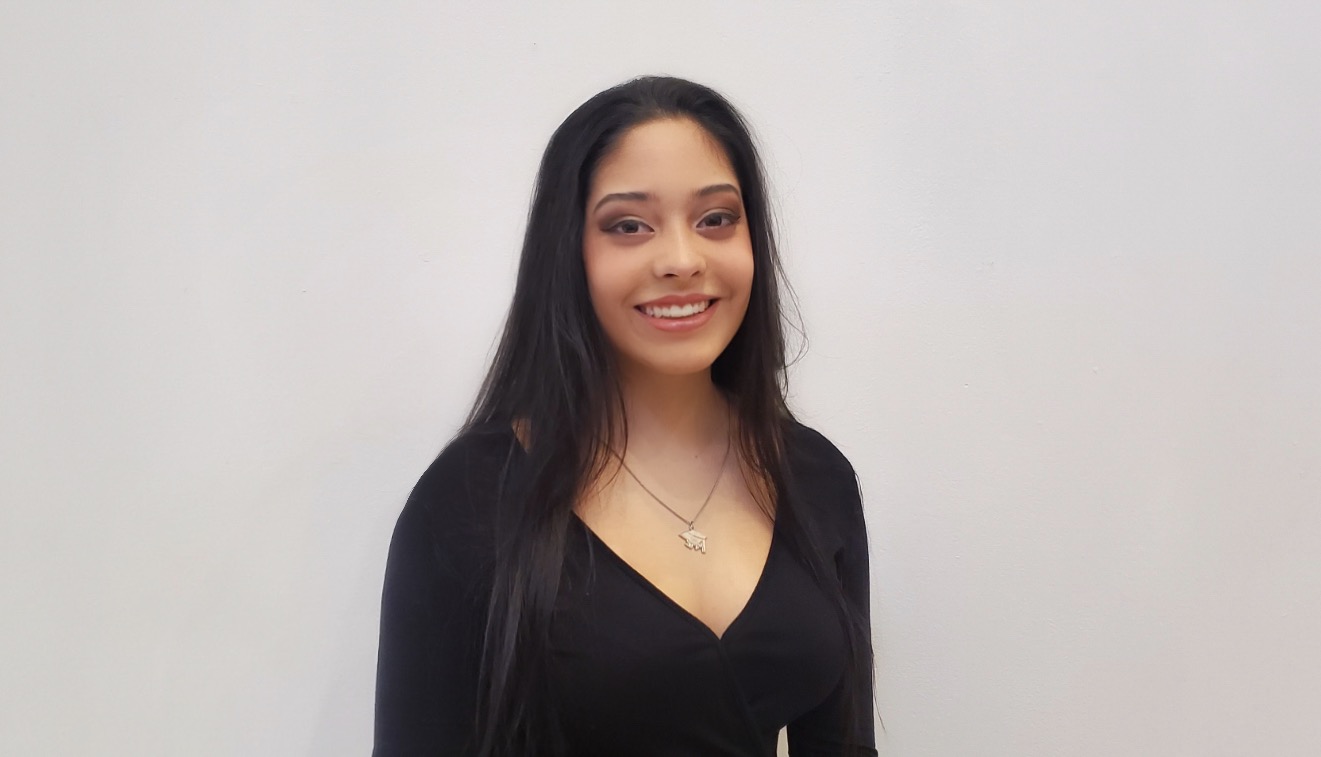
BIO
Currently a junior at FSU and originally from Weston, Florida. My research interests include examining historical photographs, narratives, and exploring the interplay that women and gender roles have in photography over time. Throughout my time within the UROP Program, I have learned the process of collecting information by analyzing different databases and archives. I have also worked to uncover systemic issues in my research, with hopes of advocating for more diverse representation. I am so incredibly grateful for the support I have been given from everyone involved whether it was family, friends, my colloquium leaders, my assistantship mentor (Ron Doel) and co-researchers.
In my free time I enjoy writing and expressing myself through various art forms such as photography, writing, 2-D drawing, and painting. I am also part of FSU's Mock Trial Program and work as the Vice President of the Pre-Law Society and Leading Women of Tomorrow at FSU. Eventually, I hope to go to law school and begin my career as a lawyer with the intent of starting my own law firm.
Women in Science: Photographic Narratives and Historical Gender Systems
Authors: Endryval Camba, Ronald DoelStudent Major: Psychology and English (Literature, Media, and Culture)
Mentor: Ronald Doel
Mentor's Department: Department of History Mentor's College: The College of Social Sciences and Public Policy Co-Presenters:
Abstract
During the Cold War, photographers joined journalists in the United States to document the accomplishments of the scientific community. Their aim, aligned with that of leading government agencies, major institutions, and influential media outlets, was to put forth positive narratives to the globe during a period of crisis about the uplifting role that science and technology played in democratic societies. But which people were held up as scientists—were women also included? In this project, we researched such themes as gender diversity and inclusion. Our range of archival sources was large: it included the extensive collection of historical photographs maintained by the U.S. Information Agency, the LIFE and LOOK magazine story files (Library of Congress, Washington, D.C.), and the company archives of General Electric, headquartered in Schenectady, New York. These photographs, intended to illustrate stories to be shared with the American people as well as foreign audiences, reveal important social and cultural insights about the practice of science and messages that leaders sought to share with the world.
Keywords: History, Science, Cold War, Women

